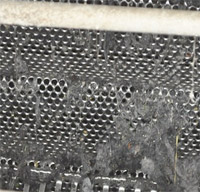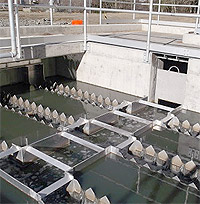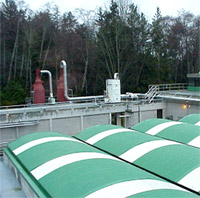Treatment Process
What Is Wastewater?
Wastewater, liquid waste, and sewage are terms for "used" water and the wastes that it carries. Basically, they are terms for what is flushed down the toilet or washed down the drain. Wastewater can also include rain water, groundwater or snow melt (inflow and infiltration) that make their way into sanitary wastewater pipes. It includes fats and grease, organics, minerals and chemicals in solution/ suspension in the water.Wastewater treatment is essential to protect our water resources, the environment, and human health. Treated wastewater can also produce useable resources such as water, biosolids, heat, and electricity.
Wastewater drains into a network of pipes maintained by sewer serviced municipalities and the Regional District of Nanaimo. Sewer systems are built to follow the natural slope of land, generally flowing towards the sea front. This design allows gravity to do most of the work transporting the wastewater to one of four wastewater treatment plants. For residential areas that are lower than adjacent lands or treatment plants, the wastewater must pass through a pumping station to pump the liquid into the plants. Treatment of our wastewater is an essential process that prevents contamination and destruction of our waterways, and our natural water resources.
Treatment Process
1. Preliminary Treatment

2. Primary Treatment

Primary treatment allows for the physical separation of solids and grease from the wastewater, and removes approximately 50% of Biological Oxygen Demand (BOD) and 60-70% of Total Suspended Solids (TSS) to produce an effluent with BOD and TSS not exceeding 130 mg/L.
Chemically-enhanced Primary Treatment provides the addition of a chemical or chemicals at the primary sedimentation stage. During this step, a coagulant (e.g. alum) and flocculants (e.g. anionic polymer) are added to the effluent to enhance the settling of solids, further reducing TSS and BOD levels.
Presently, Greater Nanaimo and Nanoose Wastewater Treatment Plants provide Chemically Enhanced Primary Treatment. The final effluent after treatment is discharged to the Strait of Georgia.
3. Secondary Treatment

Secondary treatment is a biological treatment process that removes up to 90 percent of BOD and TSS and produces an effluent quality with BOD and TSS not exceeding 45 mg/L.
The French Creek and Duke Point Treatment Plants discharge secondary treated effluent into the Strait Georgia.
4. Tertiary Treatment
Also known as advanced treatment, tertiary can use chemical, physical or biological treatment processes to remove wastewater constituents that cannot be removed by secondary treatment. Tertiary treatment can produce phosphorus levels less than 1.0 mg/L, BOD and TSS levels less than 5 mg/L, and low nitrogen levels.Tertiary treatment is typically used when there is discharge to lakes or rivers and the phosphorus levels need to be significantly reduced, or if there is a desire to reclaim effluent. Currently, no treatment plants in the RDN that use tertiary treatment.
Additional Processes
- Disinfection: Secondary effluent can be disinfected using several different methods, most commonly using, ozone or ultra-violet (UV) technology before being released into the receiving environment. Duke Point further treats its final effluent with UV disinfection.
- Odour Control: For more information on RDN Odour Control program, visit the Odour Control page.
- Resource Recovery: It is possible to extract valuable resources from treated wastewater.
Mini Glossary
- BOD (Biochemical Oxygen Demand) is a measure of the quantity of oxygen consumed by microorganisms to break down organic matter in water. A high BOD means that there will be less oxygen; and oxygen is essential for the survival of aquatic life. Thus, high BOD levels result in the contamination of the receiving (marine) environment.
- TSS (Total Suspended Solids) are solid pollutants that would be captured on fine filter paper. They are visible in water and decrease water clarity. High concentrations of TSS can cause many problems for aquatic life.
Telephone: 250-390-6560 (Nanaimo) 250-954-3792 (Oceanside) 1-877-607-4111 (Toll Free)
1-800-862-3429 (Emergency) | 250-390-1542 (Fax)
